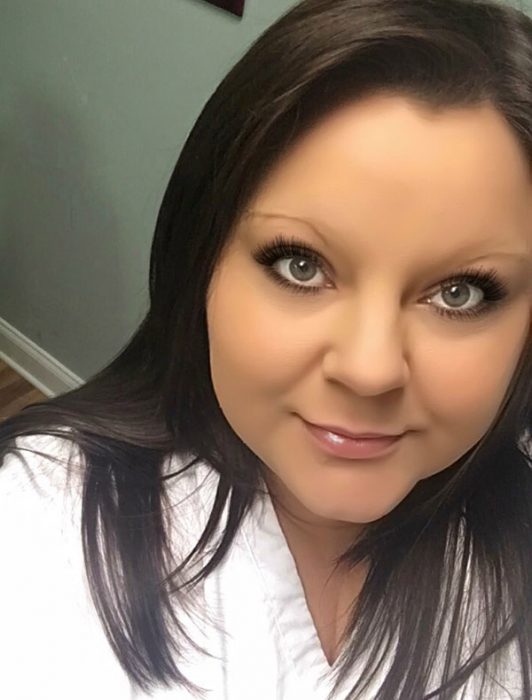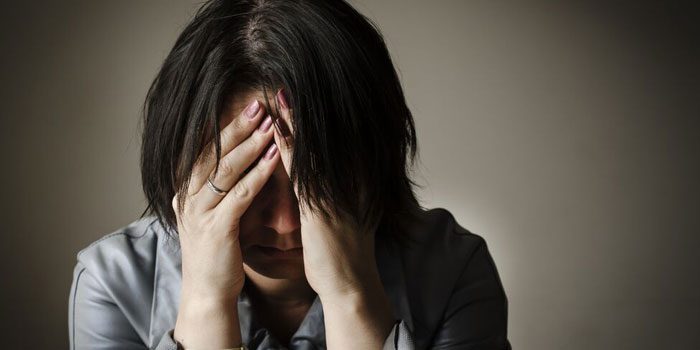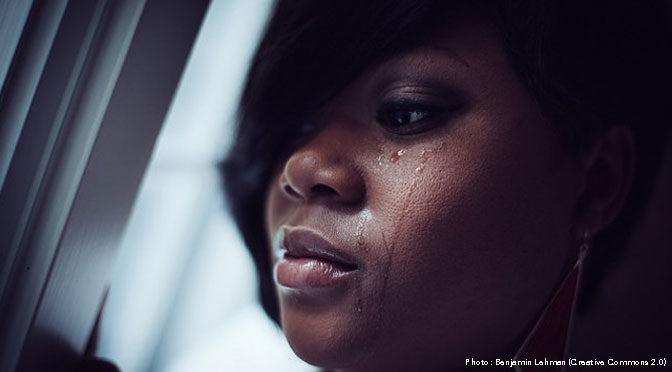
Crystal Eldridge, former Planned Parenthood manager
This is part three of a three-part series, taken from an exclusive Live Action News interview with a former Planned Parenthood manager. Read parts one and two.
Crystal Eldridge, a former Planned Parenthood health center manager in Winston-Salem, North Carolina, was so against what she and others were doing at Planned Parenthood that she would encourage other employees to leave — and even tried to save babies from abortion. Crystal had nightmares about the POC room — where babies were pieced back together after abortion to make sure all their body parts were accounted for — and witnessed how women’s abortions did not go as smoothly as the public is led to believe.
She told Live Action News that Abby Johnson’s abortion worker ministry, And Then There Were None, “used to send a lot of postcards” but the employees there “were always told to tear them up and throw them away.” Crystal didn’t. “I always kept them in my top drawer, and I told my employees if you ever want to leave, and don’t know how, go in my top drawer.”
Crystal’s pro-life views were known to the other Planned Parenthood employees. “Everybody there that I worked with knew my stance on abortion. They knew I was against it. They knew I would talk to the girls in private, and try to push for adoption, and try to save babies — and I did save some.”
“I could’ve lost my job for that [encouraging women to choose life],” Crystal told Live Action News. “I always knew life was more important than money. I was always willing to lose my job to save a baby.”
The sales pitch
Crystal knew that Planned Parenthood was presenting abortion as if it was the easy option — the preferred option. She told Live Action News that while “there was a consent room, where you have to, by law, tell them their choices: you can keep the baby, carry to term, you can do adoption, or abortion,” education wasn’t really part of what they did there. Instead of actually educating the women on all of their options, the speech they got was more akin to, “You know your choices, right? You can keep it, abort it, or put it up for adoption,” as opposed to, “We can offer you pamphlets to adoption facilities or we can get you in contact with folks who can help you through your pregnancy.” That was the extent of their options counseling, Crystal said, “And I have a huge problem with that.”
“Not all the staff know” that women get a sales pitch from Planned Parenthood, according to Crystal. But she witnessed it herself. “One student was crying her eyes out because if her dad found out [about her pregnancy] he would stop paying for her school. He was abusive. This guy sounded like a tyrant. She was terrified. I told her, ‘I can put you in contact with people that will help you.’ But because I was taking too long, according to the [abortionist, who was the medical director], and holding up the [abortionist] from getting [the abortion] done, she came in my office and sat down on the floor with this girl and the girl told her what was going on. The doctor told her, ‘You’re 18, and you can always have another baby, and this will be done in a matter of minutes and you can get on with your life and put this behind you.’ Like, playing up abortion. That was our medical director. That was just sick.”
This was the same abortionist committing the abortion and profiting from it — and abortionists at the facility were paid per abortion.
Full disclosure
Crystal was concerned every day for the babies who were being aborted, and asked several of the abortionists if the babies could feel pain in the first trimester. Most of them said they could not, but one abortionist admitted the babies could feel it.
Then, one day, Crystal watched as a baby proved he could feel everything. She was in the procedure room holding a patient’s hand at the time. “They had to use ultrasound guidance to find out where the baby was — and at 13 weeks it’s got a shape, it looks like a baby — and it looked like… it looked like it was fighting the hose,” Crystal told Live Action News tearfully. “It looked like it was fighting it, like, kicking away from it. All I could do was just close my eyes and pray.”
While abortion patients were awake for their abortions, they could not see the ultrasound screen. However, Planned Parenthood had to, by law, offer the option for the women to see their babies on the screen. Crystal told Live Action News that most women chose not to see the ultrasound, and believes part of the reason is because Planned Parenthood would “start off on a negative connotation,” saying to the women, “You don’t have to look at it if you don’t want to. You don’t have to look at it,” practically urging them not to. The other reason Crystal believes women wouldn’t look is because “if you have to look at it, it makes it real, and you have to take responsibility for what you’re doing. And who wants to do that?”
According to Crystal, if a woman chose to see the ultrasound, she would be able to see her child in real time and also hear the heartbeat.
The aftermath of abortion
So how did women feel when they left the Winston-Salem Planned Parenthood? Crystal told Live Action News that she heard of “a couple suicides,” and says women experienced “a lot of depression.” But what is perhaps most shocking is that it’s as if Planned Parenthood knew that women were likely to experience these things after their abortions — and they put journals in the recovery room so that women could use them to begin the grieving process. Crystal said:
The women would cry… 99% of people were not happy, and there were journals in the back room — in the recovery room — that the women were encouraged to write in, to kind of get their feelings out. And I could never read them in full because I cried too hard….
In those journals, Crystal said, post-abortive women wrote about their grief and regret… “that they planted flowers in the rose garden for the babies, and that they didn’t want to have to do that [abortion], that they didn’t know of any other way.”

Crystal said that to her knowledge, despite the pushing of the “celebrate your abortion” mantra from Planned Parenthood and the abortion industry, “all of the Planned Parenthoods” were expected to place these journals in their recovery rooms. “They told us the journals were for women to get their feelings out on paper, kind of like a coping mechanism.”
In other words, publicly, Planned Parenthood says abortion is about women’s empowerment, but behind the scenes, they’re putting journals in their abortion facility recovery rooms because they know abortion is not an empowering experience, and not just like any other surgical procedure.
And if that weren’t enough of a tacit admission to the tragedy of abortion, Crystal also told Live Action News that Planned Parenthood “gave [clients] handouts to a company called Exhale,” which calls itself a post-abortion “counseling” service that seeks to “acknowledge” any “feelings” a woman has after abortion, whatever they may be, in case they needed to talk to someone after their abortions. “I don’t see how abortion could be liberating if you’re already anticipating somebody needing professional help,” Crystal said. “How could that be liberating?”
Taking the bad and using it for good
Today, when Crystal thinks back on her time working for Planned Parenthood, she has regrets — but she is grateful to God for the way He is using her past experiences there. “Some people say, ‘You were put there to save babies.’ But I don’t think I was put there to save babies,” said Crystal. “I think that I was put there for the wrong reasons…. I made the wrong choices. But I think that God took something ugly and bad and used it for good, which He’s so known to do.”
Now, Crystal volunteers with the pro-life groups Cities4Life and Love Life Charlotte, reaching out to women who are entering abortion facilities like the one she used to manage. “I try to save babies and witness to women and call out to them on the sidewalks in a loving manner, to try to let them know that they do have options, that they are not alone. They think they’re alone but they’re really not alone. They’re not. And they just don’t know it yet.”
And when she interacts with these women, she tells them what she used to do at Planned Parenthood. “It helps me relate to them and they open up a little more because they’re able to ask me questions and I can answer them honestly. You know, when they say, ’What will happen to my baby afterwards?’ I tell them, ’Well, its torn to shreds in a Pyrex bowl and then we’re gonna throw it in the freezer.’ Nobody wants to hear that, but they need to hear that. I can tell women, ‘I don’t know what you’re feeling inside, because I’ve never been in your shoes, but I do know what will go on in those places and I know what you’re gonna feel like when you leave because I’ve seen it a thousand times.”
Editor’s Note: If you are making a decision about abortion, have questions about pregnancy, or need help after an abortion, click here for more information.







